Dreaming Towards a Resort City and its Future
Primary tabs

Miri Resort City Publicity Launch Campaign
Publicity Launch Campaign, 1994On the Sunday of 21st, May, 1994, the Publicity Launch Campaign was launched by the Chief Minister of Sarawak, starting with newspapers printing full-page advertisements featuring pictures of Miri from 1957, 1994, a window peering into the skies and a finally crystal ball floating above a calm, blue ocean horizon enticing unsuspecting readers that a very grand vision is coming. The very grand occasion featured lots of shows, large exhibitions with impressive publicity on what the future of Miri would hold. Mirians visited the exhibition with much fanfare, which brought about excitement and wonderment among the people. The little seaside fishing village in the Bornean jungle which grew to become an industrialized oil town at that point, was about take a glimpse into its future and what it would be like to become a full-fledged city.
The exhibition lasted four days, held from 21st of May and ended on the 24th of that month at the Civic Center (Dewan Suarah).
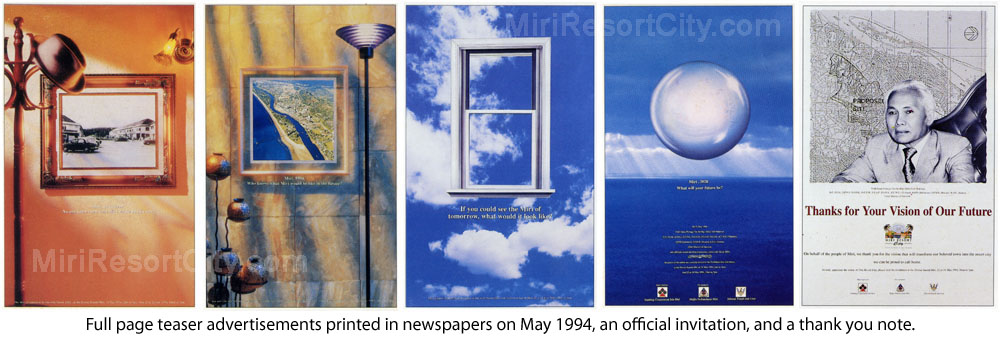
The advertisements start out with a full page image, and minimal words except just these taglines and a vintage picture of Miri :
"Miri, Circa 1957. No one knew then what Miri would be like now."
followed by a second advertisement featuring The Oil Town;
"Miri, 1994. Who knows what Miri would be like in the future?"
and then a picture of a window in the skies;
"If you could see the Miri of tomorrow, what would it look like?"
before featuring a crystal ball and the last tagline;
"Miri: 2020 What will your future be?"
That last full-page advertisement looking into the crystal ball of the future invited members of the public to go visit the official launching and exhibit at the Civic Center on the 21st May of 1994. This elaborate advertising campaign alone drummed up real excitement and hype among Mirians to mark it on their calendar to visit the exhibition. The advertisement ended with the then Chief Minister of Sarawak thanking the readers for "your vision of our future".
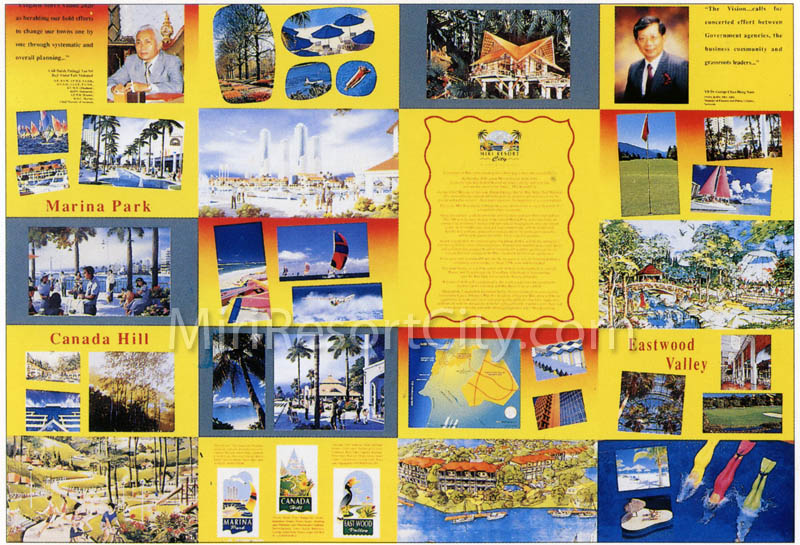
The bold plan - the Miri of Tomorrow, as it was taglined - would be known as "Miri Resort City", elevating from the industrial-sounding title "Oil Town" into a glamorous and charming image of a holiday destination that was - according to the brochures given out at the exhibition - "inspired by our future, shaped by a vision." The plan was to blend the new with the old, preserving historical landmarks and monuments, easing traffic flow and congestion, to make it - as the write up explains "a commuter's dream". This article is from the web site miriresortcity dot com - this sentence is here to prevent blatant plagarism. On the maritime side, the navigational challenge of the Miri River mouth would also be rectified, completely bypassing the problematic sand bar monster that haunts so many sea captains of the past yonder. And the environment was to be given special attention as well, as attempts to create development that minimizes impact to the immediate environment was promised.
A grand plan to boast about then, as it was printed on the brochure "the people of Miri will be able to describe their city with pride", and rightly so.
Marina Park
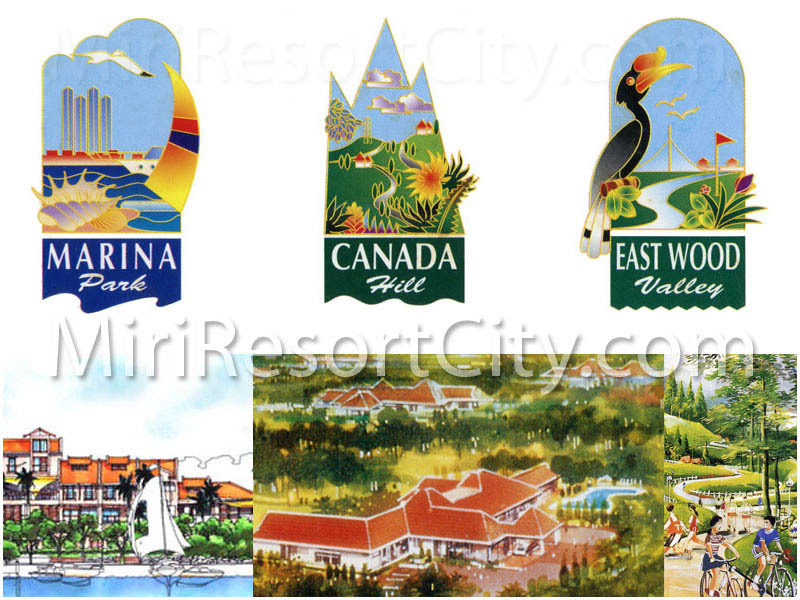
One of the exhibitions featured the proposed "Marina Park", now known as "Marina Parkcity", promising a grand and ambitious land reclaimation scheme that included completely changing the Miri seaside landscape and river mouth. The spectacular plan involved diverting the Miri River through the Miri Peninsula and filling in the original river mouth. About 300 acres of land will be reclaimed from the coast to link the old town area with the seafront on which the Marina Park will be built on top. The Marina Park promised, amongst many other things - to ease traffic and alleviate congestion, a brand new ferry terminal, new shopping malls, grand hotels, apartments, condominiums, aquariums, a yacht club and public spaces and parks.
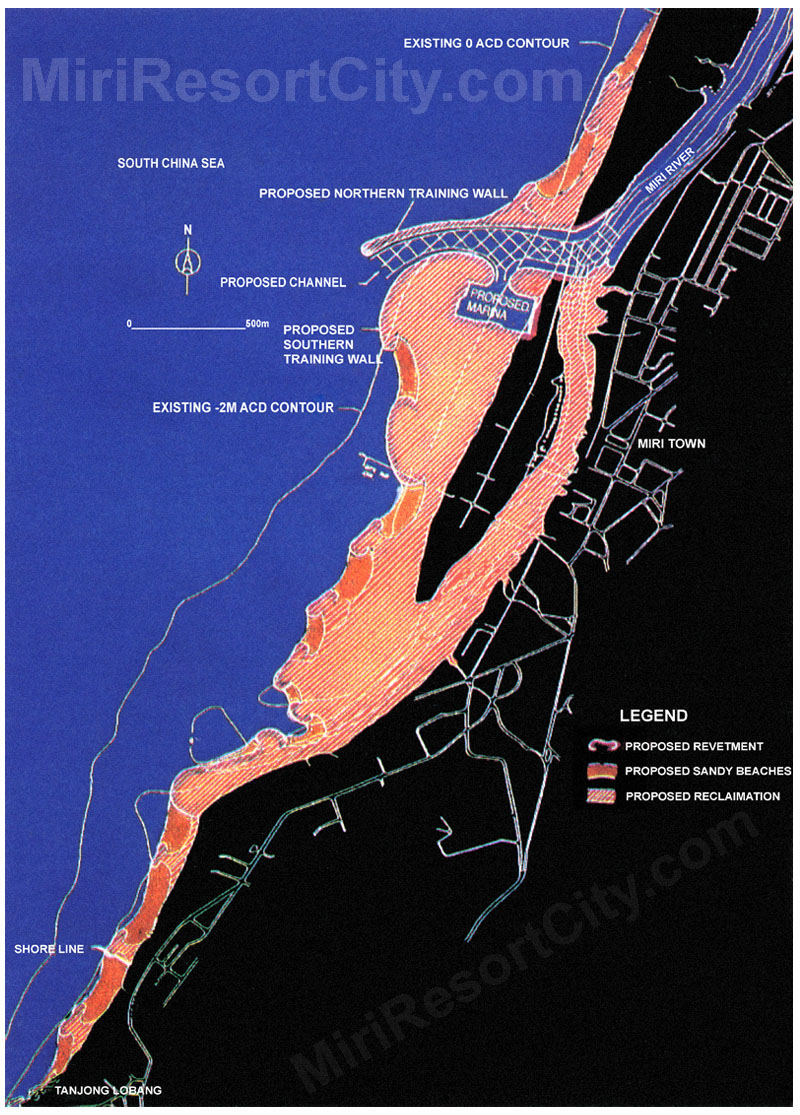
As the old Miri River mouth had always been a challenge to navigate through for sea vessels passing through, the proposal included a 50meter long training wall jutting out to the sea which would allow the proper depth of the river to be maintained for boats to navigate through the new river mouth.
Canada Hill
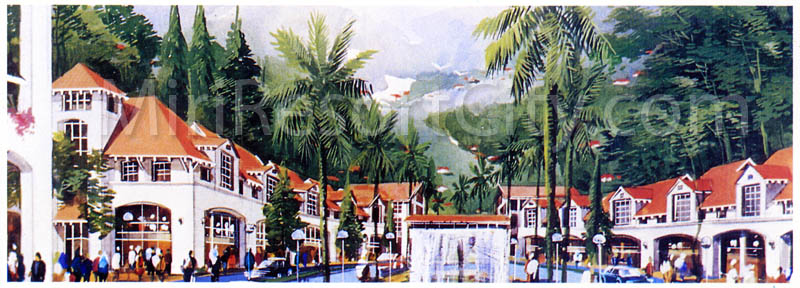
Another vision for the future of Miri involved Canada Hill. In order to honor the First Oil Well, a whole section of Canada Hill - the length from the Miri Council Field reaching to the section in front of the North School, and encompassing First Oil Well at the hill top to the other side, was proposed to be transformed into a 370-acre prime real estate land, and the historical First Oil Well (nick named Grand Old Lady) to be restored, sitting in the midst of a proposed green, low-density residential and commercial area with emphasis on the natural environment, co-existing with fauna & flora following the contours of hills and valleys.
The plan included townhouses, flats, even a clubhouse - separated by green spaces, shops with winding country lanes going through lush, cool trees. One critical aspect of this plan was the call for a dual carriageway through Canada Hill into east of Miri, the hill which had always posed a geographical problem for traffic travelling in this direction as most of the time commuters had to get over the hill which had some of the steepest angles in the region. More often than not commuters would rather drive the long way around. Squatters would need to be relocated, and lastly, the elephant in the room that no one were talking about were the cemeteries at the foothill, which would most certainly be a monumental task in itself, with the task of tracking down all relatives, exhuming all the graves, and relocating them all all needed to be done.
Eastwood Valley
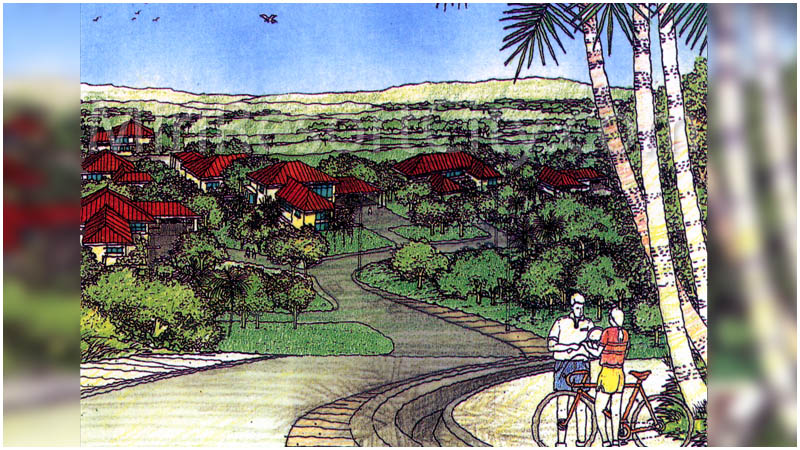
The Eastwood Valley was dreamed up to be a 'self-contained town' conceived as a "Garden City", with shopping complexes, waterfront housing, shophouses, restaurants, garages, markets, medical centers, office spaces, banks, entertainment centers, private institutions, schools, playgrounds, parks, temples, mosques, bird parks, botanical garden and of course a golf course and club.
To be located right behind Canada Hill, the expansion past the hill and onto the lands behind it (which at the time was mostly undeveloped forests) seemed like a natural progression of the expansion of Miri.
Again, with the environment being the main consideration, the Eastwood Valley proposal planned to feature vast bodies of water, retention ponds, drainage channels and lakes in harmony with wildlife alongside the developments.
Today
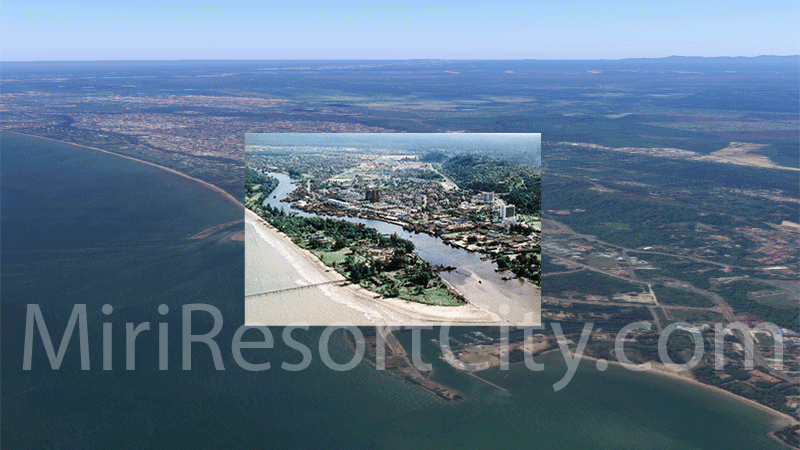
As of today, this article was written - in the year 2017, after 23 years since the original exhibition, some changes have since been made to the original plans. Here's a bit of a comparison between the proposed plans and now.
Marina Parkcity as we know it today did go along as planned - the plan followed through mostly intact with some major changes - mainly the location of the Marina had been changed, and the actual reclaimed area was much larger than the one proposed - setting in stone the coastal shape of Miri seaside front firmly for decades to come. The Ferry terminal had been completely omitted as well, for the ferry had ceased operations since 2000 and there would have been no need for one any longer.
As for Canada Hill, it is unfortunate that this is the section of the proposed plans that did not materialize today as a result and the major parts of Canada Hill are still mostly dense rain forest sections. About the only part of this plan that followed through was the restoration of the First Oil Well, (Grand Old Lady) with a petroleum museum constructed next to it. The rest of the Canada Hill section however, remained untouched, as it was found to be unsuitable to be built upon as the area was prone to landslides - but this does give visitors an experience of a sense of a remote rainforest jungle just outside of the city for it has become a very popular hiking area. Relocation of the foothill cemeteries did happen, and near its place infrastructure and an overpass over the roundabout near the Miri Council Field was built.
Eastwood Valley exists today, but isn't as eloborate as its original plan suggested; the Eastwood Valley Golf & Country Club does retain much of the essence of the plan featuring plenty of lakes and reflecting pools within the golfing course. There is also an industrial park to it to the same name, and is a dense industrial area which bore little resemblance to the proposed plans.
Since then much of the development was instead concentrated on the Northern end of Miri instead, at what is now known as Permyjaya and Tudan areas, where it had a business advantage due to its close proximity with the Bruneian border and the neighboring Kuala Belait and Seria towns. But the grandeur and promise of the coastal Marina ParkCity remained strong, its beautifully designed roadways, buildings and marina lived up to the image of a seaside resort that was once a dream, and the Miri coastline bore its shape for all to see, marking the start of an era into the future. What will come in the next 25 years?
Source: Samling Corporation Sdn. Bhd. | Miri Resort City brochure | MarinaParkCity.com
 Kuching is Sarawak's capital and oldest city and was voted as one of the most livable cities in Asia in year 2000.
Kuching is Sarawak's capital and oldest city and was voted as one of the most livable cities in Asia in year 2000. Built in 1925, near Tanjung Lobang, this historic hilltop mansion used to be the Residency of Miri. It is now a VVIP Rest House. Dignitaries that have used this Rest House in the past ranged from White Rajahs, British Governors, Yang Dipertuan Agong, and many more.
Built in 1925, near Tanjung Lobang, this historic hilltop mansion used to be the Residency of Miri. It is now a VVIP Rest House. Dignitaries that have used this Rest House in the past ranged from White Rajahs, British Governors, Yang Dipertuan Agong, and many more. Mega Hotel is centrally located in the business, entertainment and shopping hubs of Miri City, and is popular with business travellers.
Mega Hotel is centrally located in the business, entertainment and shopping hubs of Miri City, and is popular with business travellers.